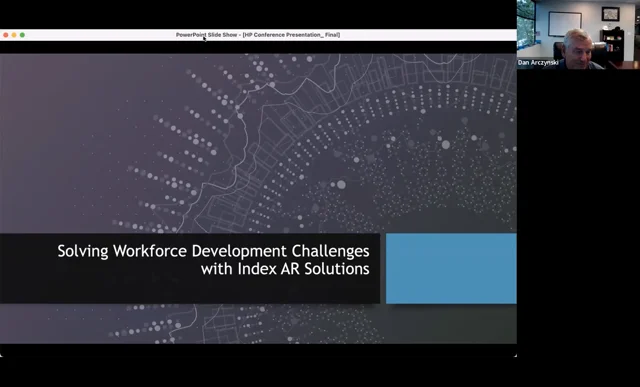Introduction
Augmented Reality (AR) development has gained significant popularity in recent years, with its ability to enhance the real world by overlaying digital information and virtual objects. However, like any emerging technology, AR development comes with its own set of challenges. In this blog post, we will explore some of the common challenges faced by developers in AR development and discuss potential solutions to overcome them.
1. Hardware Limitations
One of the primary challenges in AR development is the hardware limitations of devices. AR applications require powerful processors, high-resolution displays, and advanced sensors to deliver a seamless user experience. However, not all devices meet these requirements, leading to compatibility issues. Developers must optimize their applications to work efficiently on a wide range of devices.
2. Tracking and Calibration
Accurate tracking and calibration are crucial for AR applications to overlay virtual objects onto the real world. However, achieving precise tracking can be challenging due to various factors such as lighting conditions, object occlusion, and sensor inaccuracies. Developers need to implement robust tracking algorithms and calibration techniques to ensure accurate and stable AR experiences.
3. Content Creation
Creating compelling and interactive content for AR applications is another challenge. Unlike traditional development, AR requires a combination of 3D modeling, animation, and real-time rendering. Developers must possess the necessary skills and tools to design and develop engaging AR content that seamlessly integrates with the real world.
4. User Interface Design
Designing intuitive and user-friendly interfaces for AR applications can be complex. AR interfaces need to provide relevant information without overwhelming the user’s field of view. Developers must carefully design the user interface, considering factors such as gesture-based interactions, spatial audio, and visual cues to enhance the user experience.
5. Performance Optimization
AR applications demand high-performance capabilities to deliver real-time rendering and tracking. However, resource-intensive AR experiences can strain device resources, leading to performance issues such as lag or crashes. Developers must optimize their applications by implementing efficient rendering techniques, minimizing resource usage, and leveraging hardware acceleration.
6. Integration with Existing Systems
Integrating AR applications with existing systems and infrastructure can pose challenges.
Summary
AR development presents unique challenges that developers need to address to create immersive and seamless experiences. Some of the common challenges include:
- Hardware Limitations: AR experiences heavily rely on the capabilities of the devices they run on. Limited processing power, memory, and battery life can impact the performance and quality of AR applications.
- Tracking and Calibration: Accurate tracking of real-world objects and environments is crucial for AR experiences. Achieving precise tracking and calibration can be challenging, especially in dynamic or poorly lit environments.
- User Interface and Interaction: Designing intuitive and user-friendly interfaces for AR applications can be complex. Balancing the need for information display without overwhelming the user requires careful consideration.
- Content Creation and Integration: Creating and integrating high-quality AR content can be time-consuming and resource-intensive. Developers need to ensure seamless integration of virtual objects into the real world, maintaining realism and coherence.
- Performance Optimization: AR applications demand high performance to deliver smooth and responsive experiences. Optimizing resource usage, reducing latency, and minimizing rendering errors are critical for achieving optimal performance.
Fortunately, there are several solutions available to address these challenges. These include:
-
- Utilizing advanced hardware capabilities and optimizing code to maximize performance on target devices.
- Implementing robust tracking algorithms and leveraging sensor data to improve accuracy and reliability.
- Designing intuitive user interfaces with clear visual cues and minimizing clutter.
- Streamlining content creation pipelines and leveraging existing libraries and frameworks for efficient integration.
- Applying performance optimization techniques such as level of detail (LOD) rendering, occlusion culling, and efficient memory management.
Click This Link src=”https://images.squarespace-cdn.com/content/v1/5c019444ec4eb7829e018a3e/1673545011804-OGCNNGW5EH0JVMTHTZXF/IndexAR.png?format=750w” alt=”Image” />
- Q: What are some common challenges faced in AR development?
- A: Some common challenges in AR development include hardware limitations, tracking accuracy, content creation, and user experience design.
- Q: How can hardware limitations be overcome?
- A: Hardware limitations can be overcome by optimizing the AR application for the specific device, utilizing efficient rendering techniques, and leveraging cloud-based processing for resource-intensive tasks.
- Q: What can be done to improve tracking accuracy?
- A: To improve tracking accuracy, developers can implement sensor fusion techniques, use marker-based or markerless tracking methods, and ensure proper calibration and initialization of tracking systems.
- Q: How can content creation challenges be addressed?
- A: Content creation challenges can be addressed by using 3D modeling and animation tools, integrating pre-built assets and libraries, and collaborating with experienced designers and artists.
- Q: What should be considered for better user experience design?
- A: For better user experience design, developers should focus on intuitive user interfaces, seamless interactions, clear instructions, and optimizing the performance and responsiveness of the AR application.

Welcome to my website! My name is Levi McBryde, and I am a dedicated professional Hardware Upgrade Technician with a passion for Network Solutions, Hardware Upgrades, Augmented Reality, and Game Development. With years of experience in the field, I am committed to providing top-notch services and solutions to meet your technological needs.

